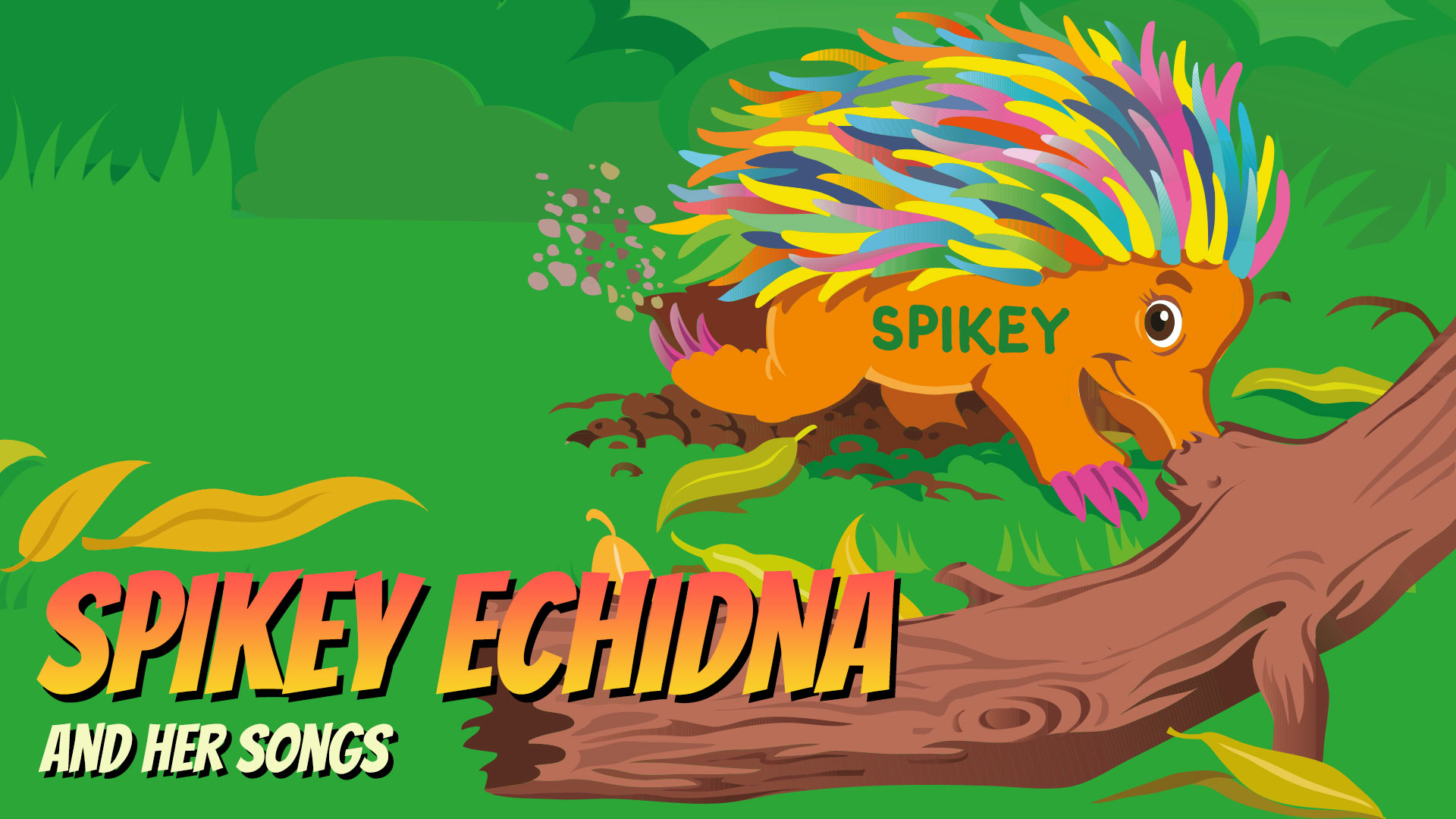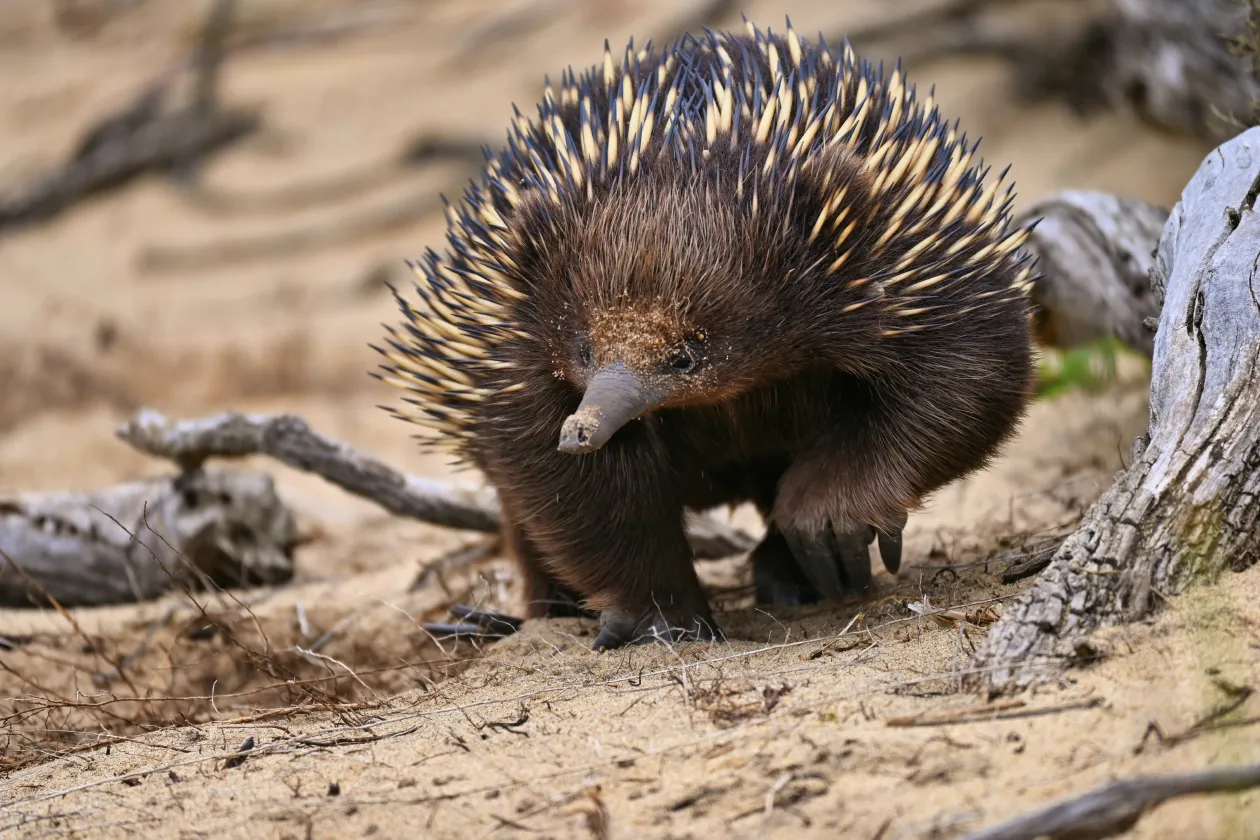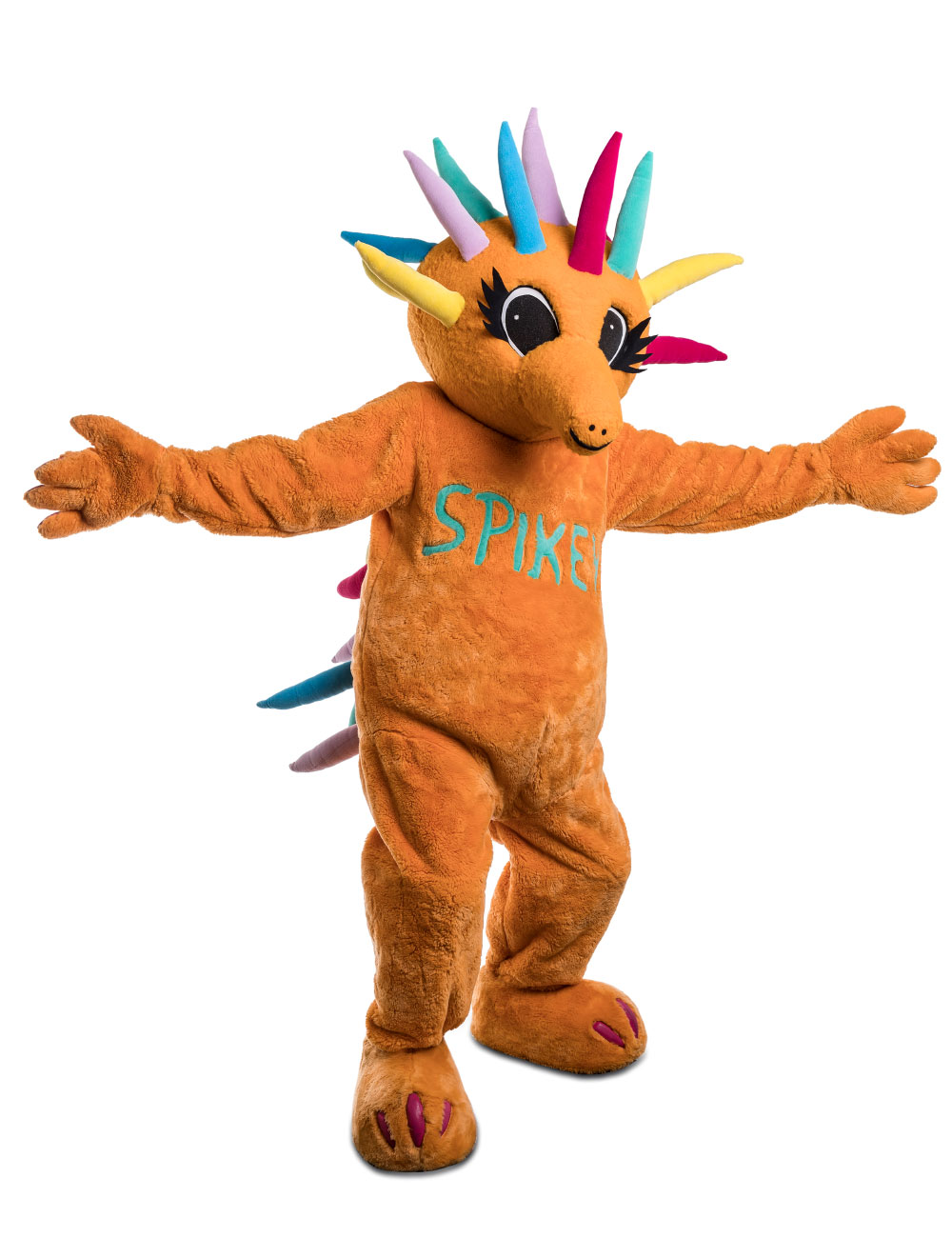Spikey Echidna loves digging for food and also just digging for fun with her friends…

SPIKEY’S SONGS
Spikey Echinda – Digging it!
The children will learn all about this unique Australian animal before they start digging and dancing to her cool reggae song. They will discover what Echidnas eat, how they find their food, what their closest relative is and what type of animals Echidnas really are.
Spikey Echidna and Suzie Roo
This song features Spikey Echidna and Suzie Roo and firstly shows us what not to do when trying to view animals in the Australian bush. But with the help of Wozza and his friends, everyone finally gets to see what they were looking for by being nice and still……and quiet. Shhhh… That way we don’t scare these special magical animals away. Spikey always seems to disappear very quickly, and a bit differently to Suzie Roo too. Remember, Spikey loves to dig! So when we finally get to see them up close we can start joining in with all their fun.
Echidna Facts
THE ECHIDNA HAS spines like a porcupine, a beak like a bird, a pouch like a kangaroo, and lays eggs like a reptile. Also known as spiny anteaters, they’re small, solitary mammals native to Australia. They’re usually between 12 and 17 inches long and weigh between 4 and 10 pounds.
Their spines are actually modified hairs. Echidnas’ bodies (with the exception of their undersides, faces, and legs) are covered with 2-inch long spines. Fur between the spines provides insulation.
Echidnas live slow and long. Echidnas have the lowest body temperature of any mammal, 32°C (89°F). Their body temperatures are not controlled in the same way as that of other mammals, and can fluctuate by up 6–8°C over the course of the day. Their long life spans — up to 50 years in captivity, with anecdotal reports of wild animals reaching 45 years — are due to their low body temperature and slow metabolism.
Echidnas are egg-laying mammals. Along with the platypus, the echidna is a member of the monotremes, an order of egg-laying mammals found in Australia. After mating, a female echidna lays a single, soft-shelled, leathery egg, about the size of a dime, into her pouch. Ten days later, the baby echidna (called a puggle and smaller than a jelly bean) hatches.
The Echidna has a pointy snout and an extremely long sticky tongue to catch ants and termites.
The Echidnas feet have sharp claws for digging and though like the Platypus the male has a spur on its ankle, it is not poisonous. They make a sniffing noise as they search for food.
They are electroreceptive. Like the platypus, the echidna has an electroreceptive system. While the platypus has 40,000 electroreceptors on its bill, echidnas have only 400-2,000 electroreceptors on their snouts.

This is a normal Echidna in the wild.

And this is Spikey Echidna from The Magical Mountains
